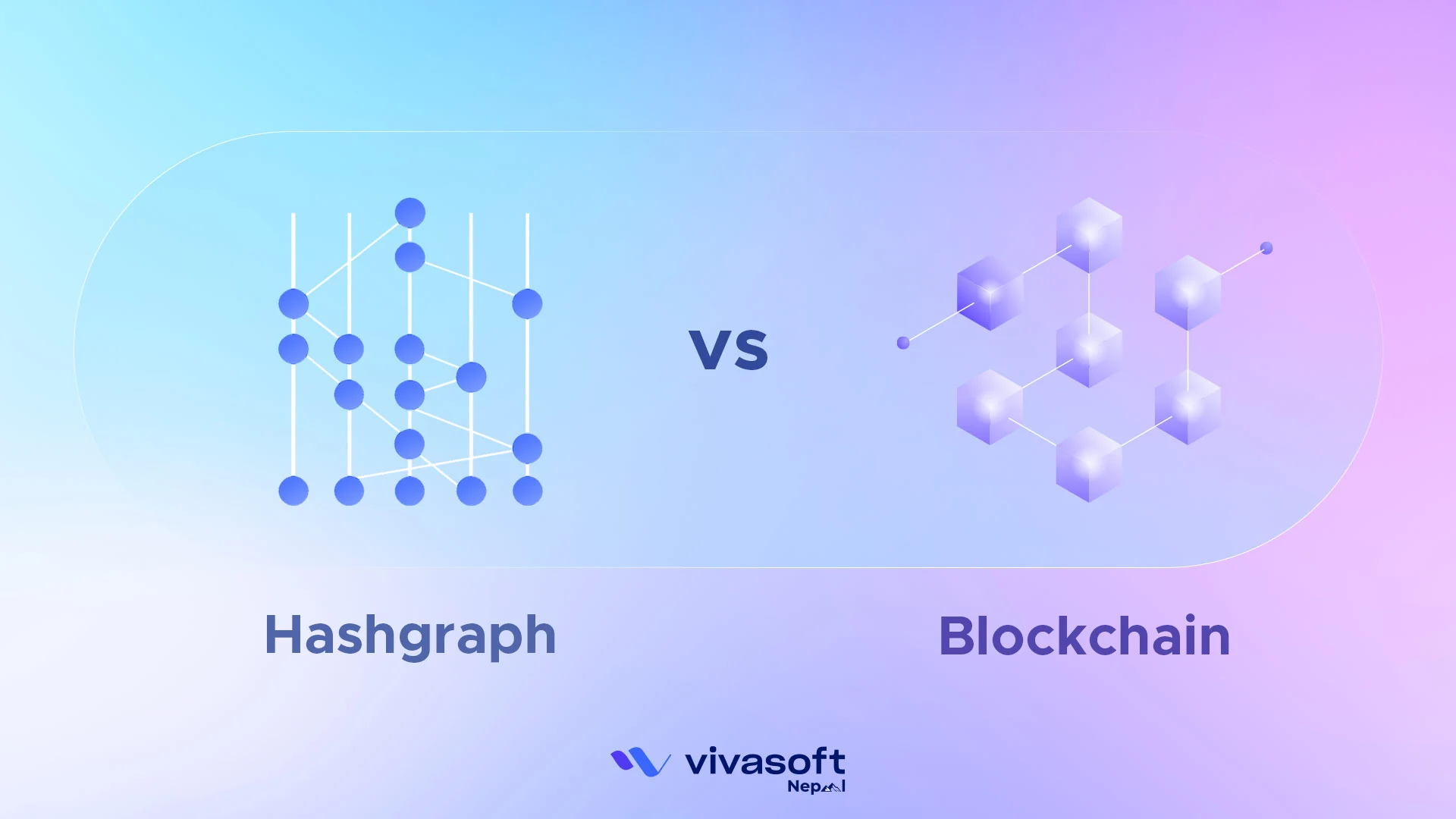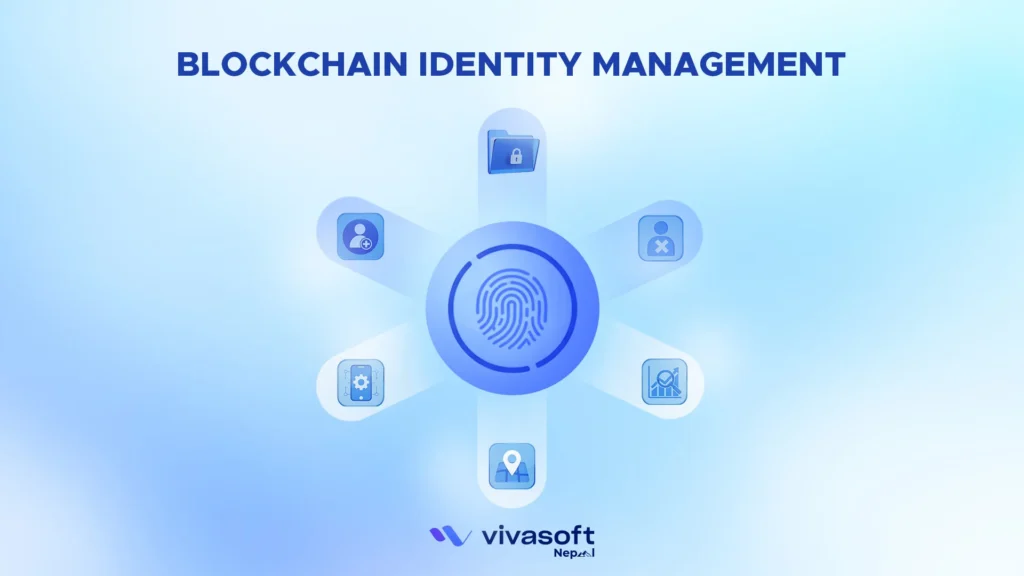Both hashgraph and blockchain are superior distributed ledger technologies that just change the way how businesses handle data and transactions.
With the proven linear chain of blocks and prominent decentralization, blockchain is often the preferred choice where securing immutable and tamper-proof records is the core requirement.
Coming to Hashgraph, which is the newly adopted DLT technology, but surprisingly grabs millions of attention with its excellent Directed Acyclic Graph structure.
It offers lightning-fast speeds, incredible efficiency, and massive scalability. But the centralization of governance and a smaller ecosystem idea often raises a question.
So which is best for your business? Let’s define today through this professional guide on Hashgraph vs blockchain.
What is Distributed Ledger Technology?
Distributed Ledger Technology is a decentralized digital system that is designed to record transactions across multiple locations or nodes.
The advanced system removes the need for a central authority. Each connected node operates independently, validates, and updates the ledger. It utilizes consensus algorithms and cryptography that offer improved data security and transparency.
It is used in nearly every industry where data is collected and used. DLT provides a chronological record, accessible to all stakeholders, and reduces information asymmetry.
Still, businesses need to be quite precise while choosing the right DLT, as it notably impacts the security and overall operational efficiency. With the right DLT, businesses can reduce the transaction time and overall cost.
What is Blockchain?
Blockchain is a precisely designed decentralized, digital ledger that is programmed to record transactions across many connected computers. Each record refers to a block that is automatically and securely connected to the previous one.
An advanced cryptographic hashing makes this connection and forms a chain. Users maintain the ledger and consistent data synchronization through integrated consensus algorithms. They are Proof-of-work and proof-of-stake.
The algorithms ensure nodes in the network are added to the next block of transactions to the chain.
What Are The Pros Of Blockchain?
Blockchain offers distinct advantages that offer strong value for business. You can take advantage of:
- Decentralization: Blockchain operates without a central authority. Here are no risks of single points of failure and censorship when controls are distributed among participants.
- Immutability: Once the data is stored, it can’t be altered and is encrypted end-to-end. This is even a great advantage in preventing fraud and unauthorized activity.
- Efficiency and Speed: The overall technology uses smart contracts, which just eliminate the need for intermediaries like escrow agents or manual verifiers. It automates the complex workflows and speeds transactions with minimal costs.
- Transparency: Blockchain uses a distributed ledger, and all the connected participants with permissioned access can access the same information at the same time. It brings the full transparency a business can expect.
- Improved Reliability: The ledger is designed to operate even if multiple nodes fail. The other active nodes can still process and store transactions without interruption, improving the uptime.
What are the Cons of Blockchain?
Behind unlimited advantage, here are some limits you need to consider:
- High implementation costs: Though Hyperledger and most Blockchain solutions are open source, they entail a notable upfront expense.
- High Energy Consumption: Mining and validating transactions in Proof of Work blockchains require massive computational power. You will need significant energy usage.
- Complexity and Expertise: Blockchain technology is complex and needs specialized knowledge for proper implementation and maintenance.
- Speed Limitations: Transactions can be slower compared to traditional systems. For finance, the Bitcoin network is where transaction speeds are inherently dependent on network congestion.
What is Hashgraph?
Hashgraph is a novel distributed ledger technology and consensus algorithm that goes beyond traditional blockchain in security. It utilizes a directed acyclic graph or DAG structure to record transactions.
The ledger is designed to process many transactions constantly instead of one by one. The entire mechanism makes Hashgraph faster and more scalable. It can handle thousands to hundreds of thousands of transactions per second.
All it possible through a specialized “gossip about gossip” protocol, and virtual voting that offers higher transaction throughput readily and securely.
What are the Pros of Hashgraph?
Hashgraph offers unparalleled efficiency through reduced computational resources and minimized communication overhead. You can ensure secure and fast transaction validation. More pros include:
- Improved security: Hashgraph utilizes Asynchronous Byzantine Fault Tolerance, the top level of security protocol. It ensures the robust prevention of malicious attacks, DDoS, and network delays.
- Reduced Computational Power Requirement: The overall system typically requires less power than many blockchain networks. Businesses with fewer hardware resources can utilize this technology.
- Higher efficiency: Hashgraph is considered 100% efficient as it utilizes bandwidth very efficiently. The bandwidth that it needs to inform all nodes of a transaction is truly minimal, with only a small overhead added. Even if the voting algorithm is optimized, there is no risk of counting votes beyond the messages.
- Fast Transaction Speed: The transaction speed of the hashgraph is near-instant. Businesses can ensure quick confirmation of the transaction and completion of operations without delays.
- Cost-Effective: The hashgraph is typically affordable as it doesn’t require proof-of-work to run. Instead, it can operate on readily available, cost-efficient hardware, and no wasted resources.
What Are the Cons of Hasgraph?
Beyond notable speed and efficiency, the hashgraph is not without drawbacks, and here are some major ones you should know about:
- Limited Adoption: Though the benefits are beyond limits, the adoption rate is very minimal. The technology is not fully utilized yet.
- Complexity: Understanding the technical terms of hashgraph, like gossip-about-gossip protocol or asynchronous Byzantine Fault, might seem quite difficult for the new developer.
- Proprietary Technology: Hashgraph is patented by Swirlds, and not fully open-source like blockchain. It typically limits the transparency and makes it harder to access for development compared to open blockchain projects.
What are the Differences Between Hashgraph and Blockchain?
Hashgraph and blockchain differ fundamentally in structure, consensus mechanisms, scalability, and efficiency. Here is the quick comparison table to get you through it:
| Aspect | Blockchain | Hashgraph |
|---|---|---|
| Structure | Blockchain organizes data into a linear or sequential chain of blocks that are linked by cryptographic hashes. | Hashgraph arranges data based on the directed acyclic graph or DAG structure. This structure supports many transactions to be processed in parallel. |
| Consensus Mechanism | Blockchain uses different methods like Proof-of-Work or Proof-of-Stake, where miners or validators confirm transactions through computational work. | It works in the gossip-about-gossip and virtual voting. Nodes quickly share data and predict other nodes’ votes |
| Transaction Speed | Blockchain processes transactions slowly due to sequential block confirmations. For instance, Bitcoin handles about 7 transactions per second, whereas Ethereum is around 30. | It offers faster transactions in parallel and can process up to 500,000 transactions per second with near-instant finality. |
| Scalability | Blocks in Blockchain have fixed sizes, and transactions are processed sequentially. It often limits its scalability. | Using DAG, it processes multiple data in parallel and handles hundreds of thousands of transactions without congestion. |
| Energy Efficiency | Many blockchains like Bitcoin and Ethereum consume a large amount of electricity due to mining. | The gossip protocol and virtual voting in Hashgraph also avoid mining altogether and reduce energy usage. |
| Security | The data in a block is secured through cryptographic hashing and digital signatures. It creates tamper-proof blocks where any alteration is almost impossible. | Hashgraph uses Asynchronous Byzantine Fault Tolerance. It is mathematically certified as the highest standard of network security for distributed systems. |
| Fairness | In blockchain, miners or validators control the order of transactions. They can reorder, or even exclude transactions | Hashgraph does not have a single participant to decide about transactions. It uses random node allocation and consensus time-stamping, more likely to process in a fair sequence. |
| Governance | As for being decentralized, network participants collectively make decisions. | In Hashgraph, you will find that the protocol is governed by a governing council. It consists of a few selected network members and guides protocol changes and network direction. |
| Efficiency | As for processing transactions sequentially, users may need to wait for each block to be mined or validated. It often slows down the confirmation and affects efficiency. | Hashgraphs process the transaction almost instantly between nodes using gossip-about-gossip. The efficiency is higher than blockchain. |
| Adaptability & Adoption | Due to open-source and consistent implementation facilities, blockchain is used by diverse industries. | Hashgraph is considered a more modern alternative to Blockchain. It was invented in the mid-2010s, so the adoption rate is typically lower. |
| Use Cases | DeFi services such as lending and trading, supply chain management, Smart Contracts for automation, cross-border payment, clinical trials and research integrity, insurance industry for claims and billing. | Supply chain tracking, Digital identity solutions, secure voting, high-throughput applications like IoT, supply chain logistics, and decentralized apps. |
Which Do You Think is the Better Choice Between Hashgraph and Blockchain?
Both blockchain and hashgraphs have distinct strengths in distributed ledger applications. With blockchain technology, you are getting proven decentralization, improved transparency, and wide transaction and broad adoption. Meanwhile, the hashgraph comes here with a robust security model, super speed, earned fairness, and energy efficiency.
So, what you should choose between blockchain and hashgraphs depends on the project’s priorities. If you need solutions for high-throughput applications such as financial settlements and enterprise mode, go for hashgraph technology.
In contrast, if you are focusing on strong decentralization and transparency, blockchain is the right choice. No wonder if you still understand which is the best for your next project. Get our domain expert guidance & blockchain services based on your specific operational and strategic considerations.
FAQs
Which crypto uses hashgraphs?
Hedera Hashgraph or HBAR is a distributed ledger that exclusively utilizes the Hashgraph consensus algorithm to provide fast, secure, and fair transactions. It is the native token used to pay for transaction fees.
Which technology is faster in processing transactions?
Hashgraph typically offers faster transaction processing compared to traditional blockchain technologies. It uses a unique gossip protocol and virtual voting consensus that speeds up the process.
Why is Hashgraph considered more scalable than traditional blockchain systems?
Hashgraph uses a DAG where multiple transactions can be processed in parallel without waiting for confirmations. In contrast, blockchains process transactions sequentially in blocks where confirmation from previous blocks is required, limiting scalability.
Why does Hashgraph achieve higher efficiency than proof-of-work blockchains?
In hashgraph, every batch of transactions is securely kept and organized permanently in the ledger. So there is no chance of discarded or reorganized parts of their data. By keeping all the information intact, you can take it as the most effective technology compared to blockchain.
In what scenarios might blockchain consensus still outperform Hashgraph?
Blockchain consensus can still outperform Hashgraph in terms of decentralization. Hashgraph’s governance by a selected council reduces decentralization, which often leads to trust issues. And even a large community is expected to make Hashgraph available as open-source software under an Apache 2.0 license after the next mainnet upgrade.













